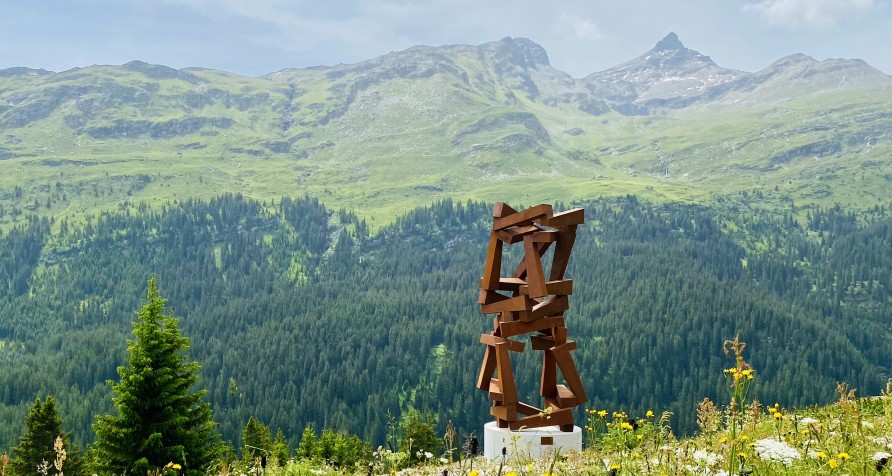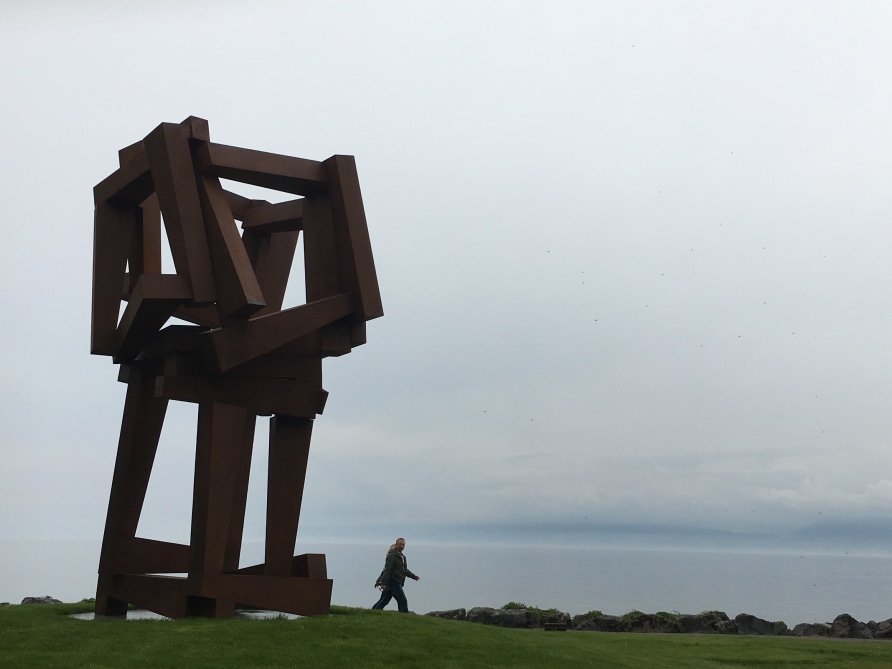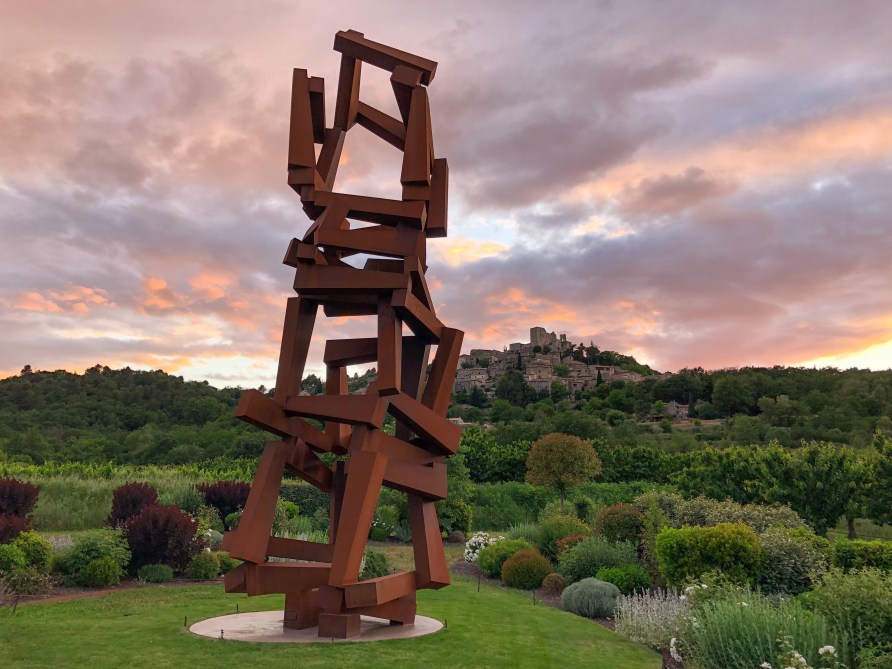Jedd Novatt discusses monumental sculpture, the challenge of materials, and what makes a piece of public art 'good'
Jedd Novatt’s ‘Chaos Constelación’, 2023 is the first monumental sculpture permanently installed in this part of the Swiss Alps, overlooking the village of Vals, which is known for its famous thermal baths designed by Peter Zumthor.
At 6.5m tall, it is made from corten steel and is one of a new series of works on this scale by the artist. The first two sculptures of this new series are now in permanent collections in Rolle, Switzerland on Lake Geneva and in Lacoste, France in the Luberon Valley.
What was the genesis of Chaos Constelación? How does it relate to the wider series?
Chaos Constelación is part of an evolving larger project that I've been working on for over 20 years. Constelación is the third of my monumental works in Cor-ten steel, and I am in the process of completing and working on several more monumental and smaller scale works in this series in my studio in Spain. The monumental Cor-ten works are part of what I refer to as my Construction series; which are a continuation of my larger Chaos series and require many months of work. So the process is rather slow, which I like.
How important was the landscape and history of Vals when selecting and placing the piece?
I have a personal history with the village and the people who live there. My family, friends and I have spent many Christmases at the Zumthor designed 7132 Hotel and thermal baths which are such an architectural achievement. We've hiked and skied through the landscape in winter and summer and over time have had varied experiences with the hiking paths and ski slopes. Certainly the peaks of the mountains which correspond with the vocabulary of the sculpture are important too.
What draws you to the use of steel as a sculptor?
I would say the challenges I face working in the various metals I use — Cor-ten steel, stainless steel, mild steel and bronze — are something that I've always found engaging. Steel has been used in iconic works of art from ancient to contemporary times, giving it a historical context that is appealing. The durability of the material and formal qualities are something that I am attracted to as well. I remember watching documentaries as a child where I would see the making of bridges, skyscrapers, and other feats of engineering. The steel workers and the achievements they accomplished, very much impressed me.
What makes good public art?
What makes art is really the question. However, I would say it depends greatly on whether the sculpture is really just an ‘object’ or a true work of art. When one makes something very large it has presence, particularly if it is representational, as it alters the viewer's perception of scale with identifiable forms.
I do think that we know some of the answers to the question when we see examples of public sculpture that do work in public sites, by sculptors such as Jorge Oteiza and Eduardo Chillida to name just a couple.
I remember when Richard Serra’s ‘Tilted Arc’ created much discussion in lower Manhattan back in the 80s. I had a studio not far from the site, and frequently saw the installation. The dialog alone was important, the fact that the work was removed due to some people being unhappy was irrelevant. The work was there – terrific – and provoked significant discourse.
The process of permanently placing monumental works in many sites at all is a bit of a miracle, given the complexities associated with the various politics involved. When I'm commissioned for public sites (or private for that matter too) my goal is that the work feels as if it has always been there. No matter what, some people will like your work, some don’t, and then some haven’t the slightest idea of what to make of the installation. The final group might be my favorite.









